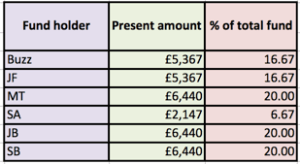If our restaurant served fish and chips one week and a’ la carte the next, both sets of customers are going to be disappointed at some point.
As with what we serve at the restaurant (within reason) we have to be clear in what we represent in trading.
Most of our Slow Trader contributors are slightly north of 60. Okay, all except you SA. But you’re close enough for it not to matter.
Therefore, you’re looking for the fund to do something interesting within the 3 to 7 year period. The younger readers, those under 45, can opt for our share ISA idea, a 20 to 30-year investment.
These are the two options. (1) a dynamic fund that uses lower time frame charts; and (2) a long-term ISA investment based mostly on fundamentals.
We like the short-term and the very long-term. We don’t want what 99% of the investment market is using, the medium term investment idea. For the long-term investors, they expect to go through a few market crashes. It’s part of the game. The long-term investors look at this as an opportunity to buy more at lower prices. The Slow Trader is a type of hedge fund that trades both long and short. The fund rides the wave whether it’s going up or down. Everything else in a market crash, the 99% of the investment market, gets stuck in no man’s land with a significantly reduced portfolio.
For the Slow Trader fund, we’ve had some glaring blunders and some moments of brilliance. We’ve benefitted from taking the time to trade the 5-minute charts over the last year, as the lessons from this were vital. However, we’re delighted with the early results from trading 4-hour charts.
We’ve traded shares from the daily charts but were significantly more successful coming back to the 4-hour charts. Therefore, we now trade a selected mix of currency pairings (FX), commodities and FTSE shares using 4-hour charts.
We have three trading opportunities a day 8 am, 12 pm and 4 pm. (8 pm is a consideration for the FX and commodities-the share market is closed at this time-but as the market goes into the night it has little movement). With the 4-hour charts, we can trade many more markets than is possible with a lower timeframe chart, and we are more likely to benefit from an extended trend.




